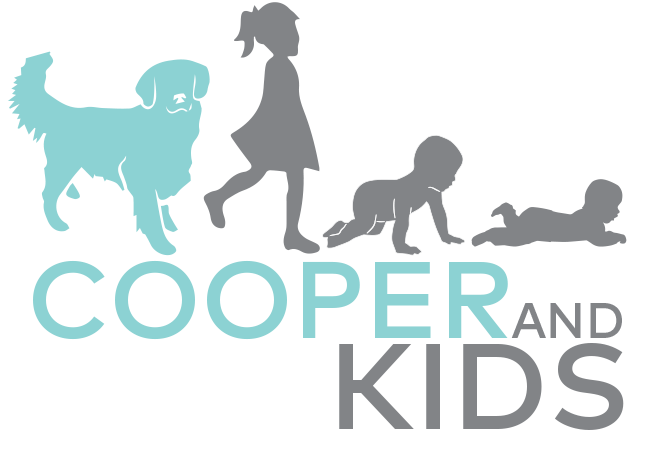“By Learning Dog Body Language, we can become more responsible guardians and caregivers. We can avoid causing harm to our companion animals and know when they need help. Science confirms that dogs are thinking, feeling, social individuals. Like humans, dogs feel fear, anger, happiness, sadness and surprise. They have likes and dislikes. They can feel confused, conflicted, and when they socialise, they do their best to maintain the peace and avoid conflict. Just like us.”
Lili Chin in Doggie Language

How do we do this? By understanding, listening and advocating.
Our dogs are communicating to us all the time. It is up to us to get educated, to learn how to understand what they are saying and to listen to them in order to know how they are feeling and what they are trying to tell us.
Dog body language is how our dogs COMMUNICATE to us and to each other!
Being able to understand, listen and advocate means we will be able to:
• Builds relationships based on trust and respect.
• Help dogs to feel safer and happier.
• Realise that we are two different species!
• Learn when your dog is happy and when your dog is not.
• Understand that dog bites generally DON’T happen without warning.
• Know what we are looking for when supervising kids and dogs.
• Know how your dog is feeling when interacting with another dog.
• Know if your dog is enjoying the way you give them affection.
• Know how they are feeling at the vets or groomer.
This list could go on and on.
I have previously written in-depth articles on recognizing dog body language if you want to learn more on this. So today we are not going to do into detail on the Understanding and Listening aspect of body language and communication. I have however included the following images below as I want you to learn these and study them over and over! But rather than going into depth on this today, we are going to focus on what we should do when we see signs of discomfort in our dogs.
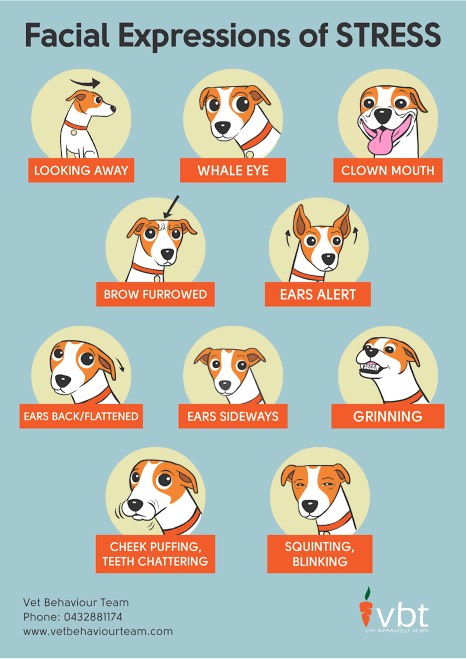
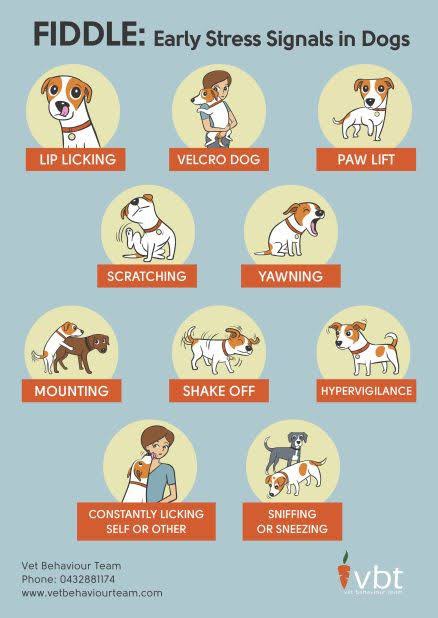
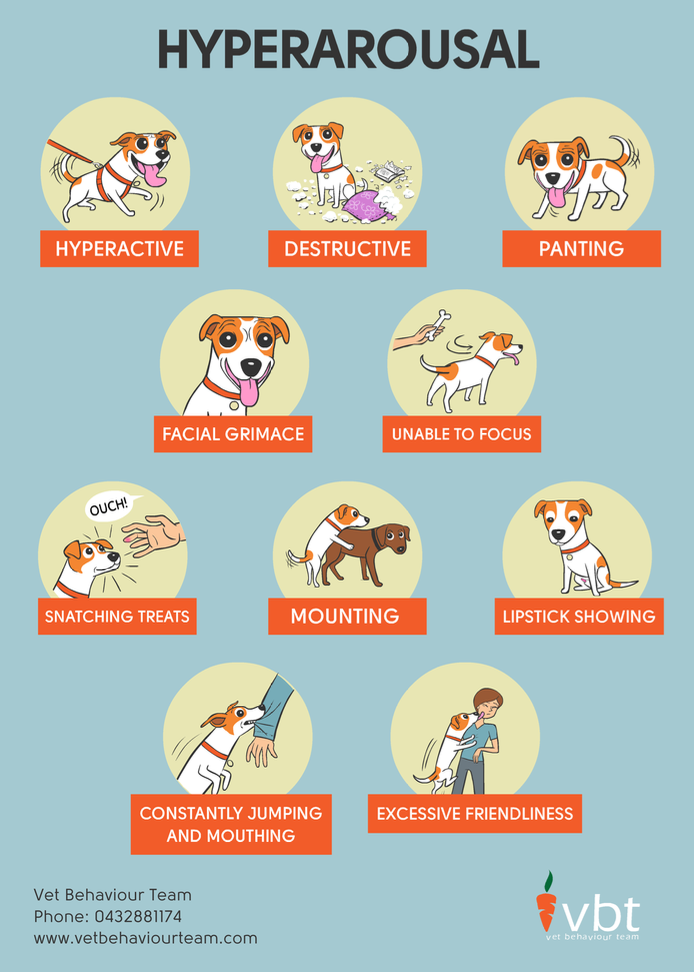
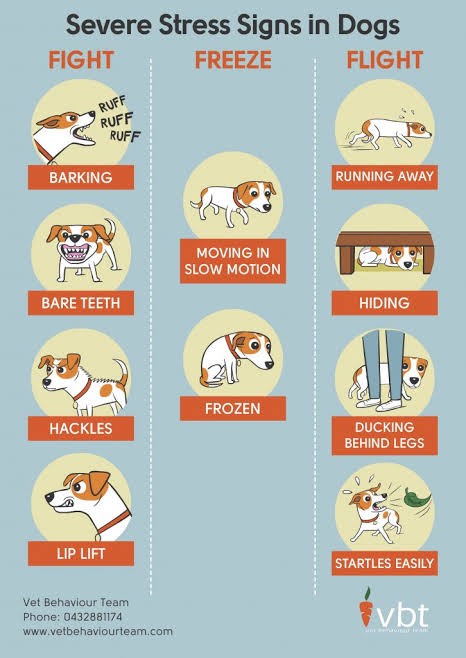

A couple of articles to look through if you want to learn more about understanding dog body language:
- How Dogs Communicate
- Our Dogs Are Always Communicating Let’s Learn To Understand Them And Help Prevent Dog Bites To Children
- Good Intentions Aren’t Enough. We Want Dogs To Enjoy Their Encounters With Children Rather Than Just Tolerating Them.
So you know how to understand dog body language. What now?
Let’s learn how to advocate for them when they need you…
I mean who else will advocate for your dog if you don’t? They are communicating to us after all. So it is up to us to notice it and to respond or to help them if they need us. We want our dogs to know that we are understanding and listening to them and that we will always have their backs. This is how we are going to build up the best possible relationship with our dogs. When we see they are starting to feel uncomfortable or stressed out in a situation, we are going to help them. We shouldn’t want our dogs to walk through life just tolerating their interactions, we should want them to enjoy them and to feel happy and safe. So this is where you come in.
How do we help our dogs when we see those signs of discomfort, stress, anxiety or fear?
- STOP doing what it is that you’re doing to them. So simple this one!
If you do something to your dog and you see any of those stress signals or early signs of discomfort, just stop. For example, patting on the head, picking up your little dog. Try not to take offence to it either, rather see it as your dog trying to communicate how they are feeling. My boy Cooper for example, loves to be close to me but not smothered by me. So if he was lying on the floor and I went in to cuddle with him, he will sometimes get up, move a meter away and then lie back down. Yep, that used to hurt my feelings. But now I know that affection like that just isn’t his love language. He likes pats, when he chooses to come to me for them, not when I invade his space when he’s resting.
And this is the same for many dogs. Same goes with when or where you pat your dog. Cooper yawns when I pat him on the head. Many dogs do not like being patted on the head. But if I pat him on his lower back, he will wag his tail and push in for more. So through that body language and dialog, I can make him feel happier daily by knowing where he enjoys to be patted and where he doesn’t. I can then also communicate this to other people when engaging with him.
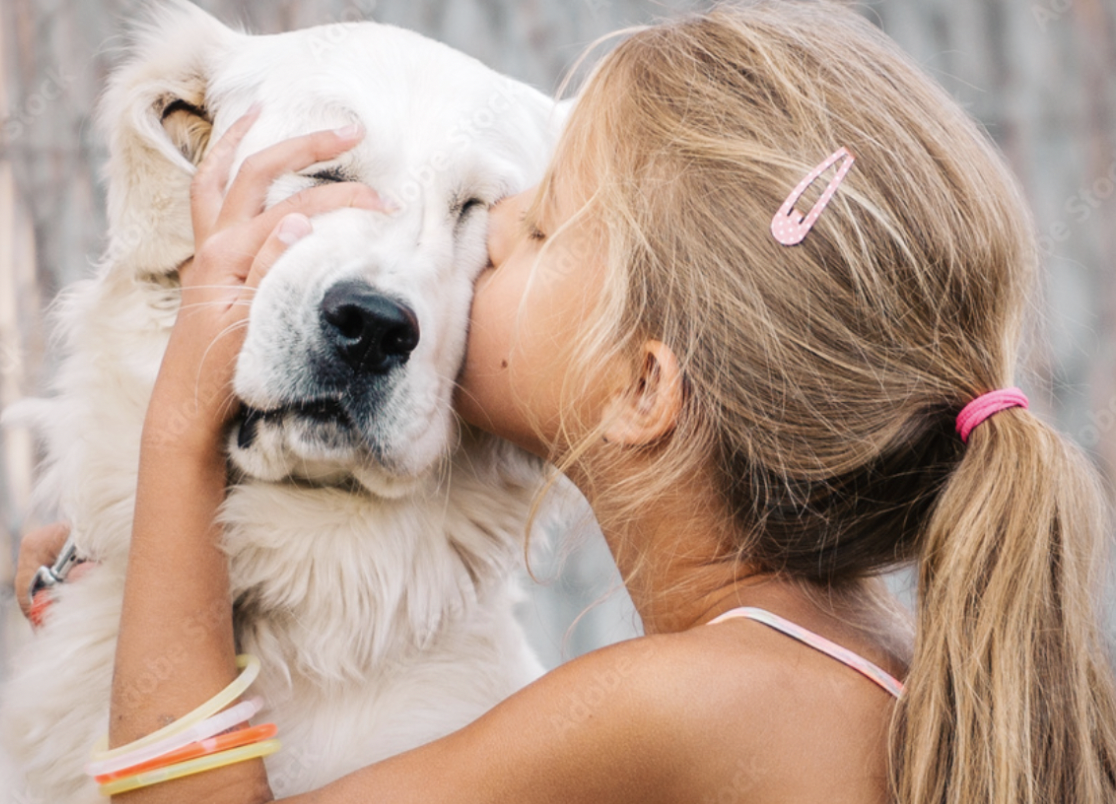
- SPEAK UP for your dog if someone invades their space or tries to do something they clearly do not like.
I find a lot of people struggle with this one. But really, you NEED to advocate for your dog! Because if you don’t, eventually they will be forced to speak up for themselves!
For example, you’re sitting at a café with your dog and a stranger comes over and starts patting your dog on the head. Your dog let’s out a big yawn and they just keep patting your dog. That yawn is the sign for you to speak up! Have a phrase you use “I am so sorry but my dog just doesn’t enjoy pats”, “My dog is shy, could you please not touch him” “He doesn’t like to be patted on the head, he much prefers you pat him here”. Anything that rolls off the tongue. Watch your dog’s body language too through this dialogue. I know this can be hard for some but if you don’t and your dog does get fed up, the results could be way worse! You can teach children to wave or blow the dog a kiss instead. Ultimately you are doing this to keep everyone safe and happy. And personally, I think society have unrealistic expectations on touching dogs they don’t know. I mean, how would you feel being touched by a stranger just because you’re cute?!
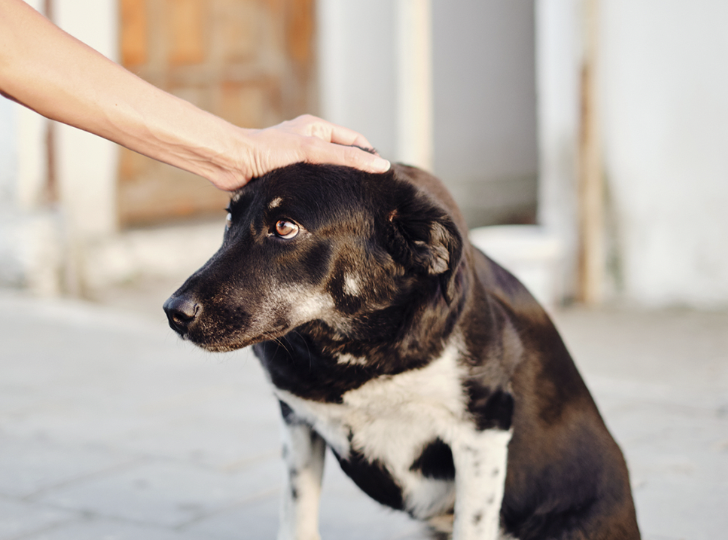
- Give them DISTANCE from the thing that is making them uncomfortable.
If you can see that your dog is scared of something. Instead of getting closer and closer to that scary thing or that thing they may react to, let’s give them distance from it to help alleviate that fear. If you feared spiders and I threw you into a room full of them, that would make your fear way worse, right? But if I showed you a photo of one from afar, you might be able to cope with this. An example could be – if your dog seems fearful of other dogs when out on a walk, instead of walking right past that dog, rather cross the road when another dog is approaching or veer up into a drive way.
From your perspective another dog, a pram or a man with sunglasses may not seem scary at all, but to your dog anything strange and unfamiliar can be frightening. Fear is not necessarily logical. Sometimes what you might think are undesirable behaviours, the barking, growling, lunging, snarling, snapping is more often than not caused by fear or discomfort as seen in the images above. This happens when the dog learns that growling or barking will make something move farther away. So let’s help the dog before they feel the need to climb the ladder and enter the stage of growling, snapping or biting.
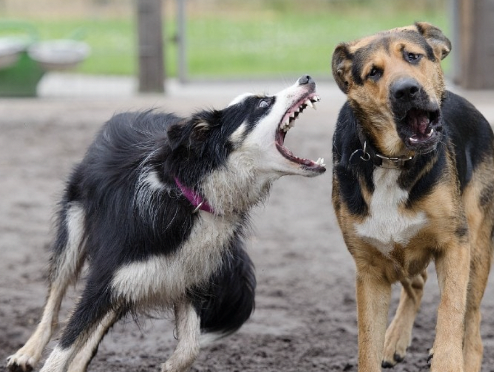
- DISTRACT and REDIRECT them away. How?
Teaching your dog basic cues/manners/skills isn’t just for fun. They can be used to distract and redirect your dog when needed.
When you can see that something is about to happen that is already starting to make your dog feel uncomfortable rather than jumping in and reacting, let’s focus on what to do:
I want you to always think about using the least intrusive methods with your dog. I mean we have dogs to love them, not to hurt them. So how can we teach them and guide them in the most humane and kind way? Yes saying “no” or “ah ah” is ok. You are not hurting the dog by saying that. But what we want to keep in mind, is what do we actually want the dog to be doing instead? How can we help to guide them to make the right choices? We can reward them, when they do the behaviours we want to see. So, rather than reacting in a negative way, how can we redirect your dog away from doing the wrong thing to show him how to do the right thing. Ask your dog to “Find It” (and throw a treat on the floor) or ask your dog to “come”, “go find dad”, “touch”, call your dog to you and then reward him for coming. Squeak a squeaky toy to distract and redirect.
Think of behaviours that might help move your dog away from that situation or interaction as usually giving a dog distance is going to help them.
I’ll give you two examples for situations where this might occur and be helpful.
Example one: Your dog is interacting with another dog. Very fast the play escalates and you can’t tell if your dog is enjoying it anymore. Jumping up and mounting begins, early signs the dog is not enjoying this anymore – so instead of yelling at them or getting mad, let’s squeak a squeaky toy to distract and redirect the dogs from their play session, positively moving them away from each other. Or we can teach them an “Enough” cue. Or we can use their names in a happy tone to redirect and move them away.

Example two: Your dog is having a rest on the floor in the living room and sees your baby starting to crawl towards him. In that moment your dog does a subtle head turn, or perhaps starts to show the whites in his eyes (also known as whale eye or half-moon eye) – both of these are subtle signs of discomfort, your dog’s way of trying to let you know that he doesn’t want the baby to approach whilst he’s resting. In that moment, instead of letting the child invade the dogs space, do what you can to redirect and distract. Baby is too young to redirect and distract so rather we need to move the dog. In that moment we call out in a happy voice “Cooper, come!” Or whatever cue will work the fastest to move your dog out of there. And then think, next time my dog is resting, I must make sure my baby is on the other side of the baby gate!
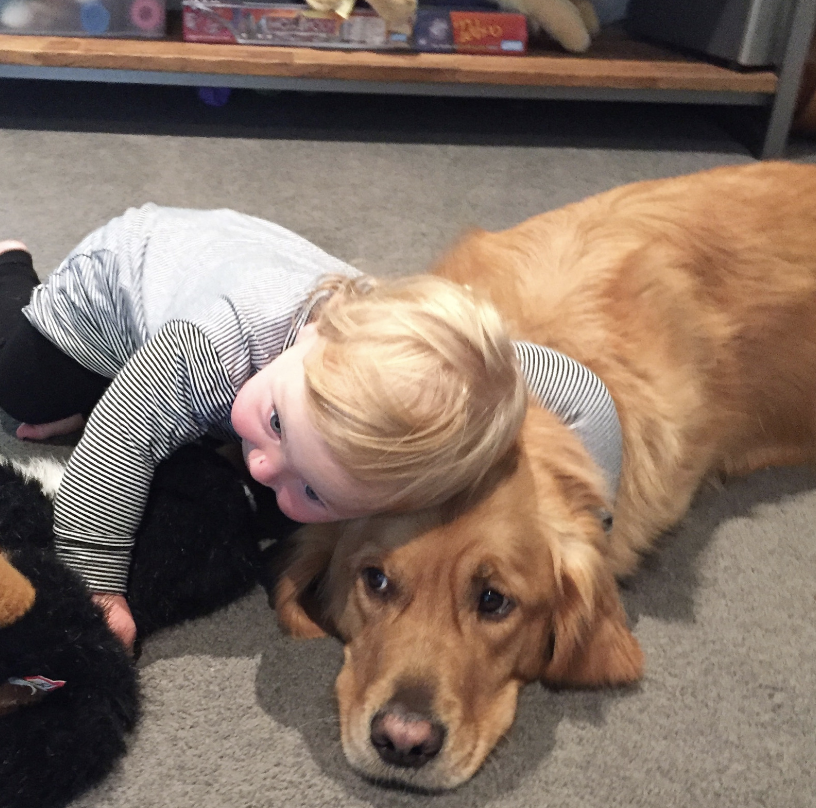
Now you know how to:
- Understand
- Listen
- Advocate
Your relationship with your dog is going to transform because they know you understand and are listening and that you will always be their voice and advocate for them.
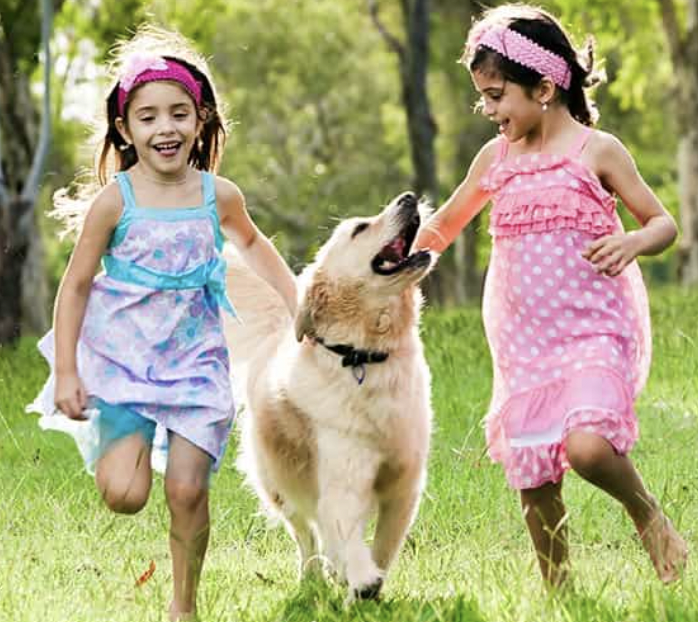
Any questions, make sure to get in touch!
Mel xox
PS. Make sure to head to our SHOP if you haven’t already! Spoil yourself and your dog!!

Disclaimer: Cooper and Kids will not be liable for anything that happens to you, your dog or children by following the advice and tips in this article. If you have real concerns or worries about your dog and/or safety of your children, please seek out a professional to come and assess the situation asap.
